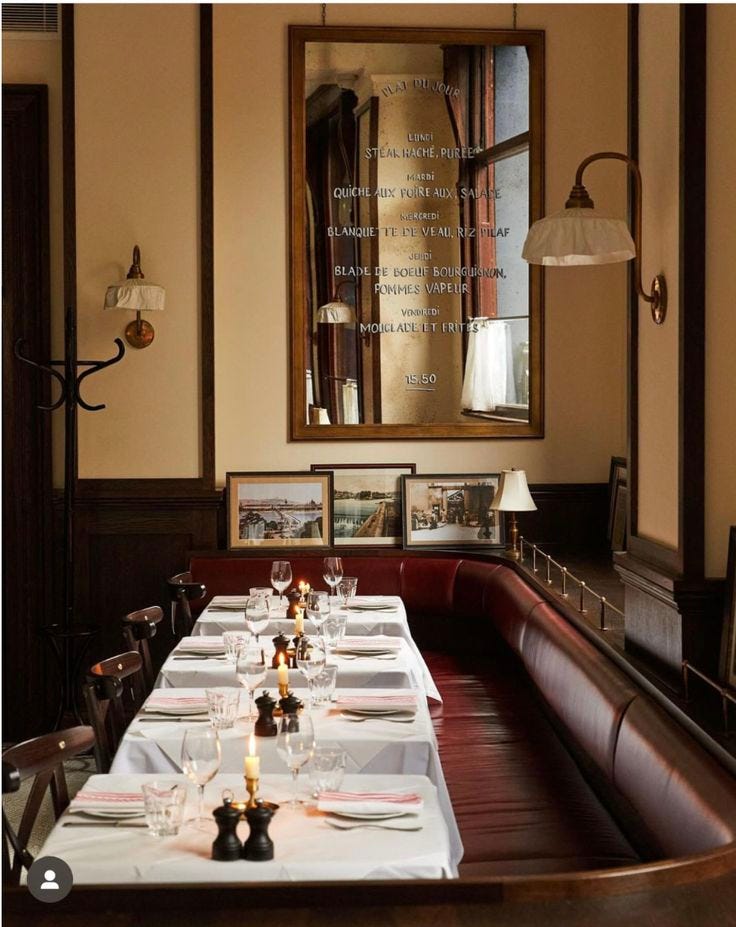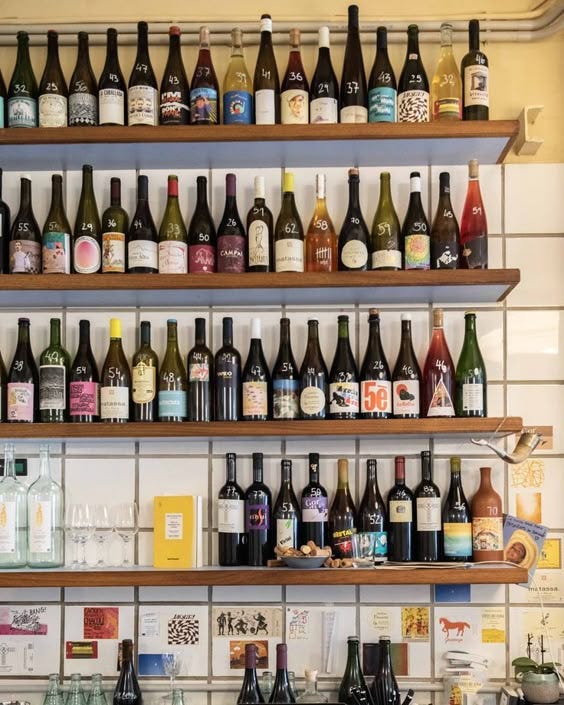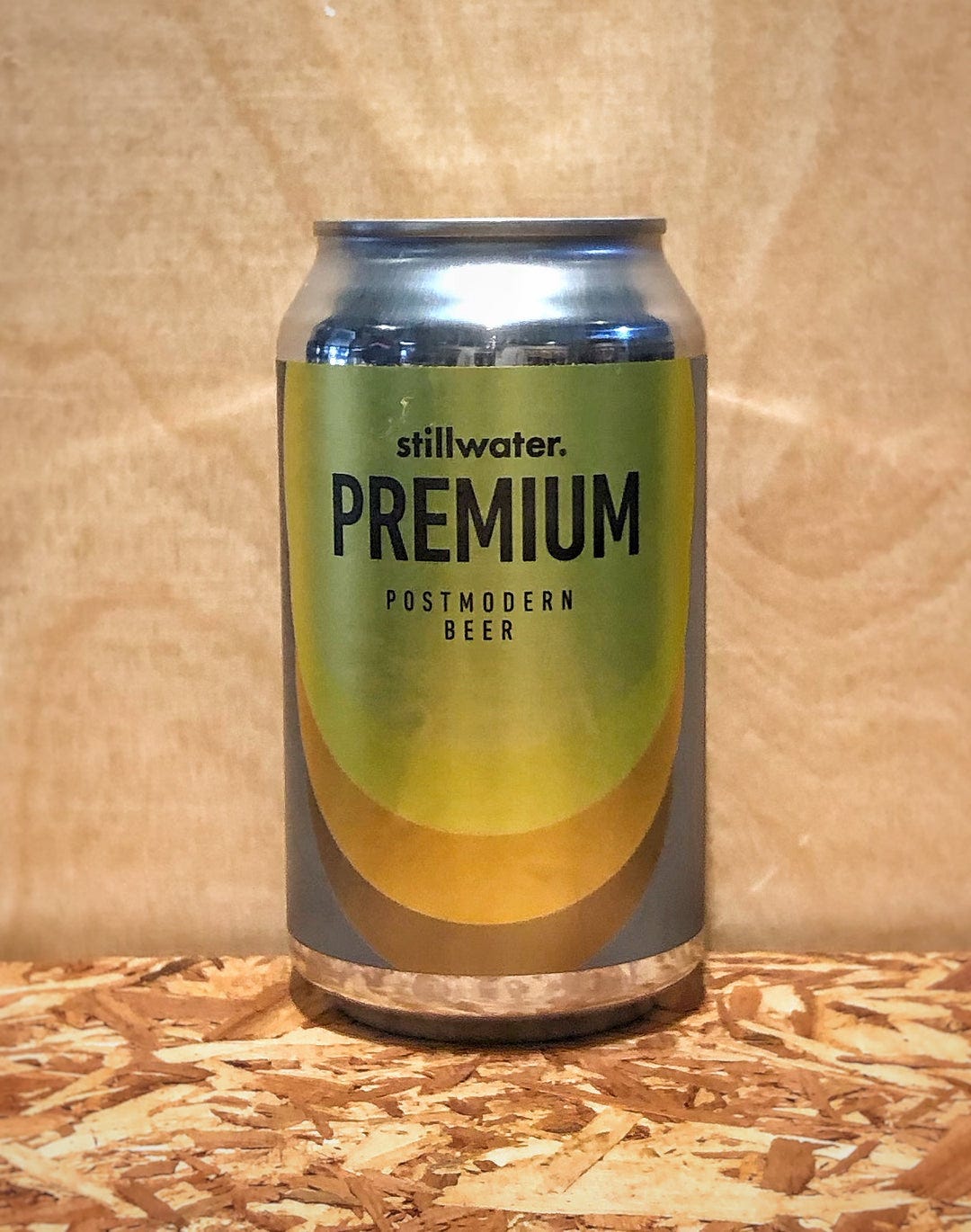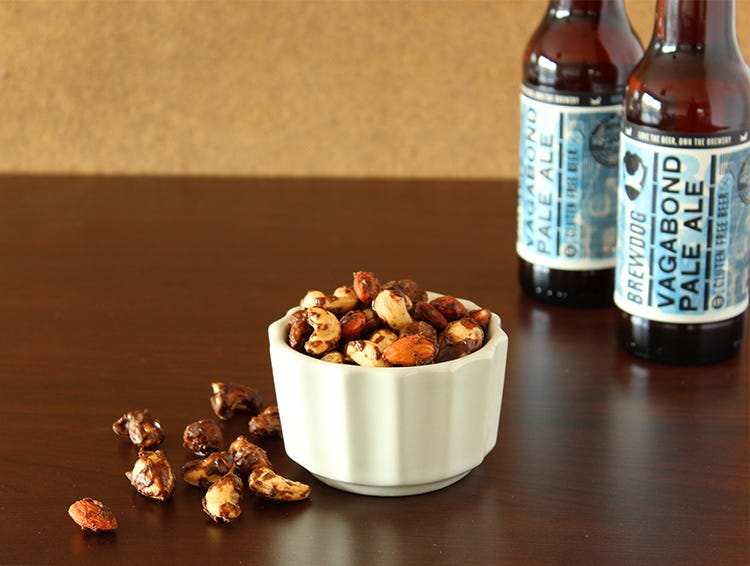Changing Tastebuds
It is finally time sherry made a comeback to the general public? Fine dining as foreplay, Postmodern beer, Vibes of wine bars, Tastebud changes on T, Animal cracker history and more!
Hello!
Last newsletter we spoke a lot about the changing seasons. Not food/drink related at all but if you’re affected by the seasons (for the worse) and wish you could escape to a summery day I have a website for you that might provide momentary distraction.
One minute park tv is exactly as it sounds, a one minute stream from parks around the world (almost all of which are filmed on sunny, summery days). If you’re not quite ready to let summer go maybe you will enjoy this.
This week:
Is this the year for sherry?
Why fine dining will always be the best form of foreplay
It’s just the vibe of the thing
Postmodern beer?
Changing tastebuds
The curious history of animal crackers
Is this the year for sherry?
It is a well-established fact that I love sherry.
I recently discovered a sherry bar in Donostia and I obviously completely lost my sh*t. It might not be so obvious, but a bar the focuses on wine from the South of Spain located in the North of Spain is not entirely common, especially in locations where local wines can be produced and enjoyed.
Kate would be the first to tell you that more than once, I’ve often mentioned that the only thing I miss being in Donostia is sherry. Well, I’m happy to report that’s no longer the case.
Hannah Crosbie, a very funny Scottish wine writer who is changing the tone and way we write about wine (she was interviewed in Punch Drink last month, you can read it here) just wrote a piece in the Guardian I’m excited by titled ‘Sherry: the frumpy wine ripe for a sexy makeover’.
It opens with “If you already love sherry, disregard the next 500 or so words of zealous waffle and get straight to uncorking the bottle in your fridge door. You are, however, a rare breed. To the likes of us, sherry remains one of the most intriguing, culturally ancient, varied and criminally underpriced styles of wine on the planet.” Naturally, I was hooked.
“How to give sherry a sexy makeover for the modern age?” How indeed?
Crosbie writes “For me, the salinity and freshness of fino and manzanilla lend themselves to start-of-a-meal drinking, in much the same way that you’d use a more complex, nutty sparkling wine. Sherry can be just as surprisingly versatile a pairing as a rich champagne, particularly with nuts and cured meats (especially Spanish ones, obviously), while the yeasty notes gained from time spent ageing under a layer of “flor” pair especially well with pizzas.”
“At the other end of the scale, sweet pedro ximénez and moscatel deserve to be enjoyed within the meal itself, rather than confined to the sofa, when you’re bloated and couldn’t-possibly-have-another-bit-thank-you full. They can even be a part of dessert themselves, poured over ice-cream or cheesecake, say. Medium and cream sherries, meanwhile, strike a perfect balance between bitter and sweet, so pop them in sauces to accompany high-acid, fruit-driven desserts.
And amontillado has a period of ageing under flor followed by some oxidative ageing in partially filled barrels called botas. These sherries are brown and super expressive, and often good for typically “tricky-to-pair” dishes such as asparagus, truffle and aubergine. That’s one reason I also recommend amontillado as a good “takeaway” wine, because it stands up to spice, heat and complexity. Fans of funky and layered orange wines may get a lot out of these wines, too.
And for those tricky oloroso sherries, which only undergo oxidative ageing, I’ve been enjoying the dark, nutty edge they bring to cocktails. Mix it up with some vermouth and bitters for a twist on a cocktail I enjoyed at Brooklyn’s Maison Premiere last month. The weather certainly calls for it.”
I’d like to take this opportunity to recommend you purchase a bottle of Palo Cortado. Don’t mind the brand too much - I haven’t been able to find a bottle that isn’t incredibly lovely and worth drinking.
Why fine dining will always be the best form of foreplay:

I had a giggle at yet another Vogue column from the Slutty Chef.
“A good fine-dining date must be slow and indulgent and want to achieve the same level of “gently pissed” that you do. Neither of you should feel any sense of hurry or pressure, and there should be room for silence in your conversation, for moments to quietly look around and reflect on the silly little Lady and the Tramp role play you’re taking part in over the course of the evening (to be clear, you’re both tramps; the restaurant is the lady).”
“It’s a performance, a craft, a not-shit version of immersive theatre. And you’ve got top billing.”
It’s just the vibe of the thing:
To quote the infamous Dennis Denuto in The Castle (1997) “It’s just the vibe on the thing.”, which seems to be exactly why Gen Z are enjoying wine bars. The NYT wrote an article titled ‘A Taste for Vibes, and Sometimes Wine’ about how “Some Gen Z-ers and young millennials say the culture and aesthetics of wine meld with their lifestyles, whether they're drinking or not.” I’ve written a lot about the decline in drinking of younger people (financial reasons, health reasons, lack of interest etc.) and also the loss of third places. According to the article “Gen Z fans of wine bars say they offer a middle ground between formal restaurants and casual dives”, perhaps they could be the return of bars being ‘third places’ (as long as the prices aren’t too high!).
Postmodern beer?
From natty wine to craft beer…
Premium, from Stillwater Artisanal, has created what they call “postmodernism in a beer”. Don’t worry, I was just as confused as you were when I read this. Stillwater Artisanal believes the bright bold colors and cartoonish graphics and fonts we’ve grown used to seeing on craft beer need a rebrand. Instead, they’re offering cans that look like this:
“Noticeably absent are the details of the brew, like style distinction (lager or IPA? Saison or blonde ale?) or the hops used. Its listed ingredients are need-to-know basic: ‘quality malts, choice hops and wild yeast’”
As Courtney Iseman writes in Punch Drink it’s not just the labels they believe are “postmodern” but the “rejection of tight restrictions around categories”.
“Subsequently, they’re labeled as such, poking holes in the elitist gatekeeping that craft beer has held dear: No, you don’t have to understand how many IBUs an EBS has or what ester characteristics to look for in a saison in order to drink and enjoy beer.”
But before we address postmodernist beer, what was modernist beer? I’m still not so sure but it would be a nice change not to be blinded by the fluorescent homogenized craft beer wall at the liquor store.
Changing taste buds:
This was a really interesting article in Eater Mag about taste bud change, a part of gender transitioning that is often missed.
AC Lamberty writes about his shock and joy discovering that his taste buds were also changing as he started hormone replacement therapy.
“Now that I move through the world differently — as a man — I relate to food differently”
“I felt like I had learned about a secret guy thing, something I was finally in on.”
Not much is known about taste bud changes for transgender people, or the longer-term effects of f transgender hormone replacement therapies (HRT) more generally. Lamberty notes “There’s a tendency for trans people to inventory our lives pre-transition in search of latent gender confusion, incidents that we can point to and say definitively yes, this is who I’ve been the whole time, testosterone or spironolactone side effects be damned. But much like one’s taste is impacted by factors like “cognitive restraint, attitudes toward foods, nutritional knowledge, social influence, and culture-based exposure,” so, too, is my gender expression.”
A delightful essay. Funnily enough, Lamberty became yet another man whose favorite snack was beer nuts.
The curious history of animal crackers:
I always jump to read a new edition of the newsletter Snack Stack written by Doug Mack, not long ago I shared The Great Midwest Cheese Duel. This week I bring you The curious history of animal crackers: Do they symbolize ancient pagan rituals or are they just fun foods to play with?
Down the rabbit hole we go! Stauffer’s Cookies (est. 1871) was the first brand to popularise the concept of animal crackers. However, the origins of the Barnum cracker can be found in Germany. Springerle is a type of German cookie, which Mack surmises from his internet research was originally part of a religious ritual.
“The custom of shaping cookies to resemble animals has been traced back to at least the 17th century, where they were part of a midwinter festival and previously pagan religious observation known as “Julfest”…During Julfest, it was common to sacrifice animals to the gods, who would in turn hopefully offer up mild weather and good crops. However, poor people faced a dilemma — they couldn’t even pretend to sacrifice their valuable agricultural animals, so instead, they gave offered animal-shaped bread and cookies in their creatures’ stead. ” as told in Mashed.
Mack wasn’t convinced by this source and dug a little deeper “This story still seemed unlikely to me, in a way that I couldn’t shake.”
Further digging revealed it was the monasteries who first baked Springerle and made the designs well… because they looked nice. Additionally, “for a long time, Springerle was only reserved for the noble and wealthy, as the production and ingredients were very expensive. It was not until the middle of the 19th century, when the price of sugar fell, that a broader section of the population could afford Springerle.”
Ah, so there goes the Pagan theory. “Sometimes the simple story is the correct one because certain truths are, in fact, eternal. Springerle exists for the same reason that animal crackers exist: it’s fun to play with your food.”
With Halloween around the corner I can help but think of all the gingerbread decorating that is about the begin. Not quite Pagan but certainly pretty and fun!
That’s it this week. Thanks for reading another edition of drink seco, have a great weekend!
Carlie xx












